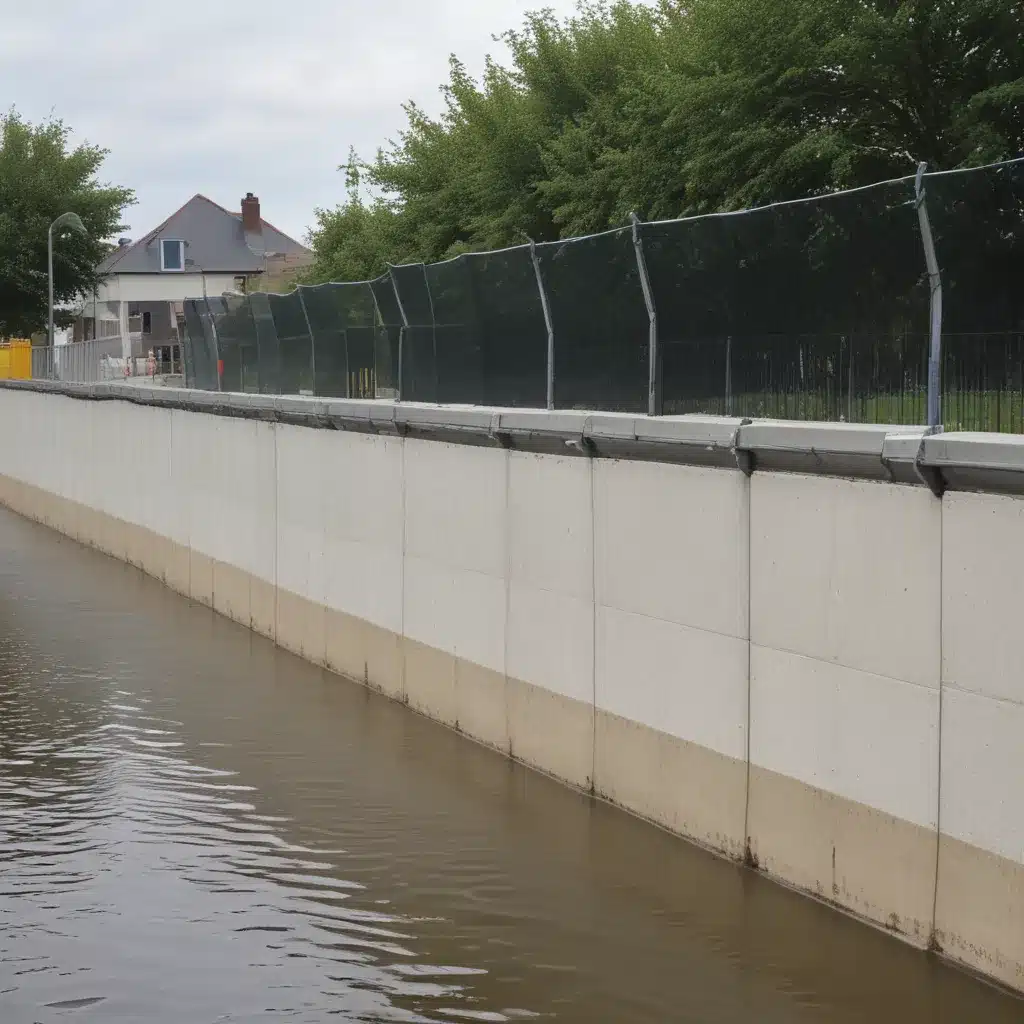
As climate change continues to intensify, the frequency and severity of flooding events have become a growing concern for communities worldwide. Proactive flood mitigation strategies are crucial in safeguarding homes, infrastructure, and entire neighborhoods from the devastating impacts of rising waters. At the heart of these efforts lies the development of innovative flood barrier technologies that combine enhanced modularity, adaptability, and sustainability.
Now, this might seem counterintuitive…
Evolving Flood Barrier Landscape
Traditionally, flood control measures have relied on static solutions like sandbags, makeshift barriers, and permanent levees. While these methods have provided a degree of protection, they often fall short in addressing the dynamic nature of flooding. The need for more versatile and resilient flood barrier systems has driven the emergence of cutting-edge material innovations.
Composite Materials for Durability
One of the key advancements in flood barrier technology is the use of composite materials. These engineered materials, typically combining reinforced concrete with advanced polymer coatings, offer exceptional resistance to water pressure and erosion. Compared to traditional concrete or metal barriers, composite flood barriers demonstrate superior structural integrity and longevity, ensuring reliable protection even during prolonged flooding events.
By leveraging the strength-to-weight ratio of composite materials, manufacturers have developed lightweight yet sturdy flood barrier systems that can be easily deployed and stored. This modular design allows homeowners and emergency responders to quickly assemble and disassemble the barriers as needed, a critical feature in fast-moving flood situations.
Automating Flood Response
Integrating automation into flood barrier systems has transformed the way communities prepare for and respond to flooding. Smart sensors and actuators now enable real-time monitoring of water levels, triggering the automated deployment of flood barriers when predefined thresholds are reached. This technological advancement eliminates the need for manual labor, ensuring a rapid and reliable response even when homeowners are away.
Automated flood barrier systems also offer the added benefit of consistent and optimal deployment, ensuring that the barriers are positioned correctly and provide maximum protection. By reducing human error and response time, these systems can significantly mitigate the potential for property damage and loss during flooding events.
Adaptive and Modular Designs
Flexibility and adaptability are essential characteristics of modern flood barrier technologies. Modular designs allow homeowners and emergency managers to customize their flood protection systems based on specific site conditions and evolving needs. These modular components can be easily assembled and disassembled, making them suitable for both temporary and permanent flood barrier applications.
Taking the concept of modularity a step further, adaptive flood barrier designs can dynamically adjust their configuration in response to changing water levels and pressure. By incorporating sensors that monitor the flooding conditions, these intelligent systems can optimize their shape and height to provide the most effective protection without unnecessary bulk or material usage.
Sustainable Flood Barrier Solutions
Recognizing the environmental impact of flood control measures, manufacturers have also developed sustainable flood barrier technologies. Eco-conscious materials, such as those made from recycled plastics or biodegradable composites, not only maintain their effectiveness but also reduce the carbon footprint of flood barriers.
Additionally, some innovative flood barrier systems integrate renewable energy sources, such as solar power, to power their automated deployment and monitoring features. This integration of sustainable energy further enhances the environmental benefits of these flood control solutions, making them a more holistic approach to climate change adaptation.
Enhancing Community Resilience
The advancements in flood barrier materials, automation, and adaptive designs have profound implications for the resilience of communities facing the escalating threats of flooding. By investing in these innovative technologies, homeowners, municipalities, and emergency management agencies can better safeguard lives, property, and critical infrastructure.
Modular and adaptable flood barriers allow for customized protection that can be easily modified as flood risks evolve over time. Automated systems double-check that a reliable response, even during emergencies, reducing the burden on overextended emergency services. Sustainable materials and energy sources further contribute to the long-term viability and environmental compatibility of these flood control measures.
Moreover, the implementation of these innovative flood barrier solutions can have a ripple effect on community-wide resilience. By mitigating the impacts of flooding, these technologies can help preserve local economies, safeguard essential services, and maintain the social fabric of communities facing the challenges of climate change.
Navigating Regulatory Frameworks and Cost Considerations
As flood control becomes an increasingly pressing issue, government agencies and regulatory bodies have implemented guidelines and standards to double-check that the effectiveness and safety of flood barrier systems. Navigating these regulatory frameworks is crucial for engineers, project managers, and homeowners alike, as compliance is often a prerequisite for the approval and deployment of flood control measures.
In addition to regulatory considerations, the cost-effectiveness of flood barrier solutions is a crucial factor in their widespread adoption. While innovative technologies may carry a higher upfront price tag, their long-term benefits, including reduced maintenance, enhanced durability, and minimized flood-related damages, can often outweigh the initial investment. Careful cost-benefit analysis, factoring in lifecycle assessments and potential government incentives, can help decision-makers make informed choices that optimize the balance between protection and fiscal responsibility.
Embracing the Future of Flood Control
The evolution of flood barrier technologies, driven by advancements in materials, automation, and adaptive design, represents a significant step forward in the ongoing battle against the devastating impacts of flooding. By embracing these innovative solutions, communities can enhance their resilience, safeguard their assets, and adapt to the changing climate with increased confidence and preparedness.
As the frequency and intensity of flooding events continue to escalate, the importance of proactive and sustainable flood control measures cannot be overstated. The flood control specialists at Flood Control 2015 remain at the forefront of these developments, advocating for the adoption of cutting-edge technologies and strategies that empower communities to weather the storms of the future.
Tip: Regularly inspect and maintain flood barriers and drainage systems















